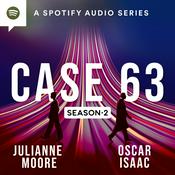27 afleveringen

Time Travel to the Cretaceous Period
17-3-2025 | 0 Min.
Imagine if you could travel back to the Cretaceous period to investigate dinosaurs like the Tyrannosaurus Rex, Velociraptor and Triceratops. That's exactly what historian Dr Madeleine Maxwell did. Find out how she fared in Just One Damned Thing After Another by Jodi Taylor. Available in paperback, ebook and audiobook.Jodi Taylor Books is a reader-supported publication. To receive new posts and support my work, consider becoming a free or paid subscriber. Get full access to Jodi Taylor Books at www.joditaylorbooks.com/subscribe

Boat Building in Egypt During the Reign of Hatshepsut
06-3-2025 | 4 Min.
AI-generated audio has been added for accessibility.The reign of Queen Hatshepsut, who ruled Egypt during the 18th Dynasty from around 1479 to 1458 BC, is one of the most fascinating periods in ancient Egyptian history. Known for her ambitious building projects and trade expeditions, Hatshepsut’s time on the throne was marked by a remarkable expansion in the arts and industry. One of her reign’s most significant technological advancements was in the field of boat-building. This was crucial not only for military and transport purposes but also for the famous expedition to Punt, which Hatshepsut ordered in her 9th regnal year.Boats had always played an essential role in Egyptian life. The Nile River, the lifeblood of the civilization, facilitated the transport of goods, people, and military forces across Egypt’s vast landscapes. From early antiquity, boats were used for everything from agriculture to war. By the time of Hatshepsut’s reign, boat-building had evolved into a sophisticated and highly specialised craft.The ancient Egyptians were masters of constructing boats that were not only functional but also enduring. Wood, especially from sycamore, was the primary material used in their construction. The development of various vessel types, such as reed boats, flat-bottomed boats for river transport, and larger seafaring ships, exemplify their ingenuity.One of the most famous aspects of Hatshepsut’s reign is her expedition to the land of Punt, a distant region believed to be located somewhere along the coast of the Red Sea, possibly in modern-day Somalia or Eritrea. This expedition, documented in vivid detail on the walls of her mortuary temple at Deir el-Bahari, was not only a symbol of her success as a ruler but also highlighted the advanced state of Egyptian shipbuilding during her time.The boats for the Punt expedition were monumental. They were large, sea-going vessels capable of making the long, perilous journey across the Red Sea. The ships were described as being “great ships” with a structure that allowed them to carry large amounts of cargo, including exotic goods like myrrh, incense, gold, and ivory, back to Egypt.Archaeological evidence, such as the detailed reliefs on the temple walls, shows that these boats were outfitted with masts and sails, indicating that Egyptian shipbuilding had progressed from simply using oars to incorporating wind power for longer voyages. The boats were also equipped with large decks, which allowed for the storage of both the precious cargo and the crew.Under Hatshepsut, boat construction underwent significant refinement. Egyptian shipbuilders during this period mastered techniques such as plank-on-frame construction, which enabled the creation of larger and more durable vessels. The boats for the Punt expedition, in particular, reflect the high level of skill required to craft such a sophisticated and long-distance vessel. The use of pitch to seal the wood and prevent leaks, along with the careful fitting of wooden planks, ensured the vessels could withstand the harsh conditions of the sea.Additionally, the use of both sails and oars in these boats represents a blending of technological advancements. The sails allowed for the boats to travel with the wind, while the oars provided the necessary propulsion when wind conditions were not favourable. This combination of power sources allowed Egyptian ships to be more versatile and reliable for long voyages, such as the journey to Punt.Hatshepsut’s contributions to boat-building did not only impact her own reign but on later Egyptian maritime capabilities. The success of the Punt expedition cemented her reputation as a ruler who could expand Egypt’s reach beyond its borders, both economically and politically. The ships used in her reign continued to serve as models for future generations of shipbuilders in Egypt.The legacy of Hatshepsut’s boat building is also evident in the way her expedition to Punt was celebrated in art and literature. The detailed reliefs found at Deir el-Bahari, depicting the ships being built, loaded, and set sail, stand as a testament to the technical prowess of her era. These depictions not only showcase the boats themselves but also give us a glimpse into the advanced craftsmanship and engineering skills of the time.Discover how Max and the team from The St Mary’s Institute for Historical Research fared in ancient Egypt in Ships, Stings and Wedding Rings by Jodi Taylor.We hope you have enjoyed this History Briefing - please CLICK HERE to read more background history from The Chronicles of St Mary’s series by Jodi Taylor.Have you discovered The Official Reading Companion and History Briefings for The Chronicles of St Mary’s series by Jodi Taylor?If you've ever found yourself wondering who did what, when, and where in Jodi Taylor’s brilliant Chronicles of St Mary’s series — this is the companion guide you’ve been waiting for.This guide is a must-have for both dedicated fans and curious newcomers. It contains synopses of every book and short story, detailed floor plans of St Mary’s Institute for Historical Research, History Briefings, chronological jump lists, character information, and more.Whether you’re brushing up on the timeline or want to immerse yourself further in the chaos and charm of St Mary’s, this guide is your ultimate companion.CLICK HERE to learn more.Jodi Taylor Books is a reader-supported publication. To receive new posts and support my work, consider becoming a free or paid subscriber. Get full access to Jodi Taylor Books at www.joditaylorbooks.com/subscribe

Desiccated Water
24-2-2025 | 5 Min.
Get full access to Jodi Taylor Books at www.joditaylorbooks.com/subscribe

The Battle of Bannockburn: A Turning Point in Scottish History
18-2-2025 | 4 Min.
AI-generated audio has been added for accessibility.The Battle of Bannockburn, fought on 23rd and 24th June 1314, was a defining moment in Scottish history, securing Scotland’s independence from English rule. This battle, led by King Robert the Bruce against the forces of King Edward II of England, was one of the most significant victories in Scotland’s struggle for independence during the First War of Scottish Independence (1296–1328). It not only cemented Bruce’s authority as King of Scots but also weakened English dominance in the region.The battle took place in the context of a long and bitter conflict between Scotland and England. In 1296, King Edward I of England – known as the Hammer of the Scots – invaded Scotland, seeking to bring it under English rule. This led to years of resistance, with figures such as William Wallace and later Robert the Bruce leading the fight for Scotland’s independence.By 1314, Bruce had gained control over much of Scotland, but the castle of Stirling, a key strategic fortress, remained in English hands. The governor of Stirling Castle, Philip Mowbray, had agreed to surrender if an English relief force did not arrive by 24th June 1314. In response, King Edward II gathered a massive army, estimated to be around 15,000–20,000 soldiers, including heavy cavalry, longbowmen, and infantry, and marched north to relieve the castle. Robert the Bruce, with a much smaller force of 6,000–8,000 men, prepared to confront the English at Bannockburn, near Stirling.The Battle: 23rd–24th June 1314Day One: 23rd June 1314As the English army approached, they encountered the Scots positioned in a marshy area with dense woodland, which restricted movement, particularly for cavalry. Bruce, a skilled tactician, had prepared the battlefield by using the natural landscape to his advantage.One of the most famous moments of the battle occurred on the first day when Robert the Bruce faced the English knight Sir Henry de Bohun in single combat. Bohun, spotting Bruce on a small horse, charged at him with a lance. At the last moment, Bruce sidestepped and struck Bohun with his axe, killing him instantly. This act greatly boosted Scottish morale.The English vanguard attempted to advance but was forced back by Scottish spearmen, organised into schiltrons—tight defensive formations of men with long spears. These tactics had been effectively used in previous battles against English cavalry, and once again, they proved successful.The first day ended with the Scots holding their ground and the English forces in disarray.Day Two: 24th June 1314Edward II ordered a full-scale attack the next morning, expecting to break through Scottish lines. However, Bruce’s forces were well-prepared.The Scots, positioned in narrow terrain between Bannock Burn (a small stream) and the New Park (a wooded area), forced the English into tight formations, limiting their mobility. The English longbowmen, a key asset in previous battles, were unable to operate effectively due to the confined space and were eventually driven off by Scottish cavalry.As the battle intensified, the English knights and infantry became trapped in the marshy ground, struggling against the unyielding Scottish schiltrons. Panic spread through the English ranks, and their retreat turned into a disastrous rout. King Edward II barely escaped, fleeing with a small group of knights, while thousands of English soldiers were killed or captured. It’s thought that barely 3000 English soldiers made it back to English soil.The victory at Bannockburn paved the way for the Treaty of Edinburgh-Northampton (1328), in which England formally recognised Scotland’s independence and Bruce’s kingship. The battle also became a powerful symbol of Scottish resistance and national identity, remembered for centuries in Scottish history and culture.The Battle of Bannockburn remains one of the most celebrated battles in Scottish history. It has been immortalised in literature, poetry, and national commemorations, including the famous poem "Scots Wha Hae" by Robert Burns.Today, the site of the battle is home to the Bannockburn Heritage Centre, where visitors can learn about this pivotal moment in history through interactive exhibits and battlefield reconstructions.Discover how the team from St Mary’s fared at the Battle of Bannockburn in Why Is Nothing Ever Simple? by Jodi TaylorWe hope you have enjoyed this History Briefing - please CLICK HERE to read more background history from The Chronicles of St Mary’s series by Jodi Taylor.Have you discovered The Official Reading Companion and History Briefings for The Chronicles of St Mary’s series by Jodi Taylor?If you've ever found yourself wondering who did what, when, and where in Jodi Taylor’s brilliant Chronicles of St Mary’s series — this is the companion guide you’ve been waiting for.This guide is a must-have for both dedicated fans and curious newcomers. It contains synopses of every book and short story, detailed floor plans of St Mary’s Institute for Historical Research, History Briefings, chronological jump lists, character information, and more.Whether you’re brushing up on the timeline or want to immerse yourself further in the chaos and charm of St Mary’s, this guide is your ultimate companion.CLICK HERE to learn more.Jodi Taylor Books is a reader-supported publication. To receive new posts and support my work, consider becoming a free or paid subscriber. Get full access to Jodi Taylor Books at www.joditaylorbooks.com/subscribe

Harold Godwinson: The Last Crowned Anglo-Saxon King of England
22-1-2025 | 5 Min.
Please note: AI-generated audio has been added for accessibilityHarold Godwinson (c. 1022 – 14 October 1066), often known as Harold II, was England's last crowned Anglo-Saxon king. His reign, though short-lived, marked a pivotal moment in English history, culminating in the Battle of Hastings in 1066, which saw the end of Anglo-Saxon rule and the beginning of Norman dominance. Both political intrigue and military ambition shaped Harold’s life and reign, and his death on the battlefield left a lasting legacy that continues to influence British history.Harold Godwinson was born around 1022, the son of Godwin, the Earl of Wessex, and Gytha, the daughter of a powerful Danish noble. His family was of high Anglo-Saxon and Viking descent and wielded significant influence in England, particularly in the kingdom of Wessex. The Godwin family played a crucial role in the politics of the time, and Harold’s rise to power was inextricably linked to the successes of his father, Godwin, one of the most powerful earls in England during the reign of King Edward the Confessor.Harold’s early career was marked by his military prowess and diplomatic skill. He became Earl of Wessex following his father's exile. Harold was a key figure in defending England against external threats, including Viking raids, and he gained a reputation as a skilled military leader.In 1064, Harold was reportedly shipwrecked at Ponthieu. The reasons for his voyage have always been unclear. Later Norman chroniclers, possibly seeking to place William firmly in the right, suggest Harold was seeking the release of family members who had been held hostage since Godwin’s exile in 1051. Yet another theory posits that Harold was travelling along the English coast on a hunting and fishing trip and was unexpectedly blown across the English Channel by a storm. It is generally agreed that he set off from Bosham, was blown off course and was captured by Count Guy I of Ponthieu and taken as a hostage to the count's castle at Beaurain. William arrived soon after and, as his overlord, ordered Guy to hand Harold over to him.Harold was treated with great honour and said to have accompanied William to fight against his rival, Conan II, Duke of Brittany. While crossing into Brittany near the fortified abbey of Mont Saint-Michel, Harold is recorded as rescuing two of William’s soldiers from quicksand. They pursued Conan from Dol-de-Bretagne to Rennes, and finally to Dinan, where Conan surrendered the fortress's keys under threat of a lance. William then presented Harold with weapons and arms, knighting him.It was during his time in Normandy that Harold Godwinson allegedly took a solemn oath to William, upholding William’s claim to the throne of England. The oath was sworn over holy relics. However, after the ceremony it was revealed that the bones were those of a saint which was a far more serious affair and begs an interesting question – was William guilty of deliberately misleading Harold? Or was Harold guilty of blasphemy in that he had sworn the oath only to obtain his freedom and never had any intention of keeping his word.This lack of clarity as to whom, exactly, Edward the Confessor had promised the crown led to confusion and conflict. The Normans firmly believed Edward had promised the kingdom to William, which, given his close ties with Normandy was perfectly possible. Harold Godwinson claimed Edward had named him as his heir as he lay dying. Also in the running was the King of Normandy, Harald Hardrada.Upon Edward the Confessor’s death in January 1066, Harold’s claim was upheld by the Witan and he was swiftly crowned King of England on 6th January 1066, just a day after Edward's passing.Harold’s first challenge came from the north. Harald Hardrada, with the support of Tostig Godwinson (Harold’s estranged brother), invaded England in September 1066. The two armies met at the Battle of Stamford Bridge, where Harold Godwinson’s forces inflicted a decisive defeat on the Norwegians. Hardrada was killed in battle, and Tostig was also slain, marking a dramatic end to the Norwegian threat. However, this victory left Harold’s army exhausted and depleted.Just days after the victory at Stamford Bridge, Harold faced a new and more formidable threat: William of Normandy, who landed on England's south coast at Pevensey on 28th September 1066. William’s claim to the throne was backed by a papal banner, giving him significant religious legitimacy and support. The two armies met at the Battle of Hastings on 14th October 1066, a day that would change the course of English history.The Battle of Hastings was fiercely contested, but William’s better-equipped and more disciplined army ultimately overwhelmed Harold's forces. Harold is famously said to have died during the battle, struck in the eye by an arrow, though the exact circumstances of his death remain a subject of historical debate. Some accounts suggest that he was killed in hand-to-hand combat, while others believe that he was struck down while defending his troops.The death of Harold Godwinson at Hastings marked the end of Anglo-Saxon rule in England. William the Conqueror was crowned King of England on 25th December 1066, beginning a new era of Norman rule that would fundamentally alter the social, political, and cultural landscape of the country. The Norman Conquest led to widespread land redistribution, with the Anglo-Saxon nobility displaced and replaced by Norman lords. The English language and legal system also underwent significant changes as Norman French became the language of the court and administration.Despite his defeat, Harold Godwinson is remembered as a symbol of Anglo-Saxon resistance and nationalism. There is considerable speculation regarding his burial site, but a strong connection to Bosham, his birthplace, and the discovery of an Anglo-Saxon coffin in the church there in 1954 have led some to propose it as the location of King Harold's final resting place. It is also consistent with William of Poitiers' description that he was buried by the sea as it is only a small distance from Chichester Harbour and in sight of the English Channel.Discover how Max and the team fared when they jump back to Beaurain Castle, in Normandy in 1064 to record the meeting between Harold Godwinsson and William of Normandy. We hope you have enjoyed this History Briefing - please CLICK HERE to read more background history from The Chronicles of St Mary’s series by Jodi Taylor.Have you discovered The Official Reading Companion and History Briefings for The Chronicles of St Mary’s series by Jodi Taylor?If you've ever found yourself wondering who did what, when, and where in Jodi Taylor’s brilliant Chronicles of St Mary’s series — this is the companion guide you’ve been waiting for.This guide is a must-have for both dedicated fans and curious newcomers. It contains synopses of every book and short story, detailed floor plans of St Mary’s Institute for Historical Research, History Briefings, chronological jump lists, character information, and more.Whether you’re brushing up on the timeline or want to immerse yourself further in the chaos and charm of St Mary’s, this guide is your ultimate companion.CLICK HERE to learn more.Jodi Taylor Books is a reader-supported publication. To receive new posts and support my work, consider becoming a free or paid subscriber. Get full access to Jodi Taylor Books at www.joditaylorbooks.com/subscribe
Meer Fictie podcasts
Trending Fictie -podcasts
Over Writing Life and Readers Questions
Luister naar Writing Life and Readers Questions, Hoorspelcast en vele andere podcasts van over de hele wereld met de radio.net-app

Ontvang de gratis radio.net app
- Zenders en podcasts om te bookmarken
- Streamen via Wi-Fi of Bluetooth
- Ondersteunt Carplay & Android Auto
- Veel andere app-functies
Ontvang de gratis radio.net app
- Zenders en podcasts om te bookmarken
- Streamen via Wi-Fi of Bluetooth
- Ondersteunt Carplay & Android Auto
- Veel andere app-functies


Writing Life and Readers Questions
download de app,
luisteren.





































